The habit of a foreign sky
exhibition curated by Ginevra Bria and Atto Belloli at Futurdome in Milan, 2016
Away from Home are some and I –
An Emigrant to be
In a Metropolis of Homes
Is easy, possibly –
The Habit of a Foreign Sky
We – difficult – acquire
As Children, who remain in Face
The more their Feet retire
(821, Emily Dickinson, 1864)
«[...] une aile colorée s’agitait, un caquètement perçait la feuillée, des stridences escortaient l’essor multicolore de volatiles, et le badauds comprenaient que la place d’Arezzo cachait une foule de perroquets ou de perruches.
Comment de telles bêtes, issue d’horizons lointains, d’origine indienne, amazonienne, africaine, pouvaient-elles vivre à Bruxelles, libres, en bonne santé, malgré le climat maussade? Porquoi aucœur du quartier le plus huppé?»
[Les perroquets de la place d’Arezzo , Eric-Emmanuel Schmitt]
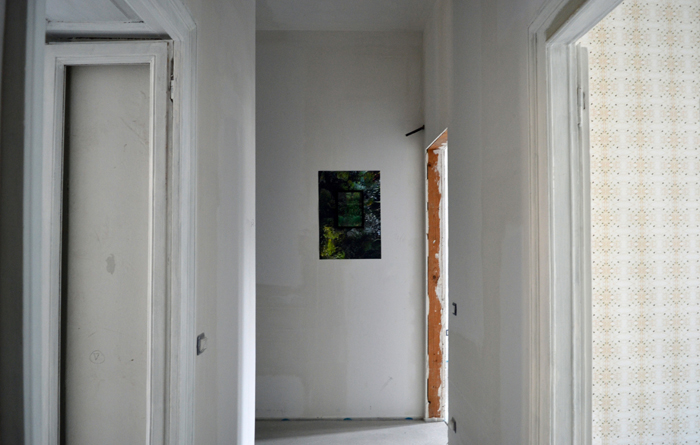
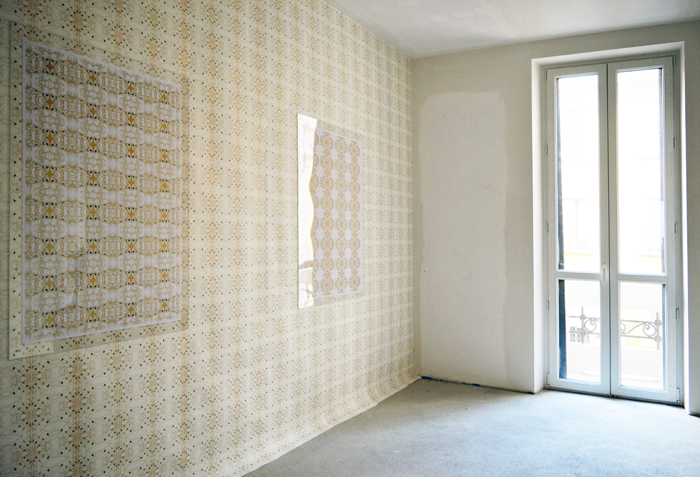
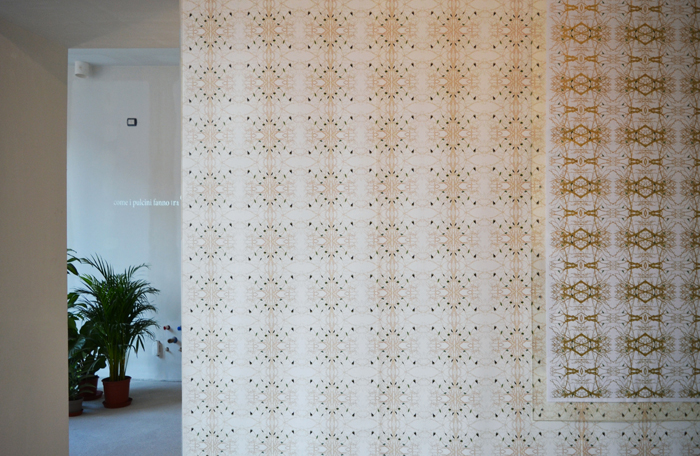
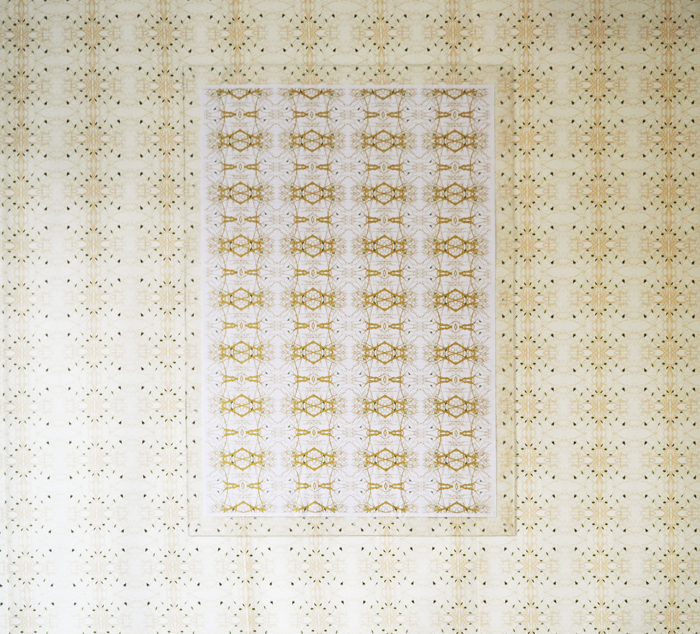
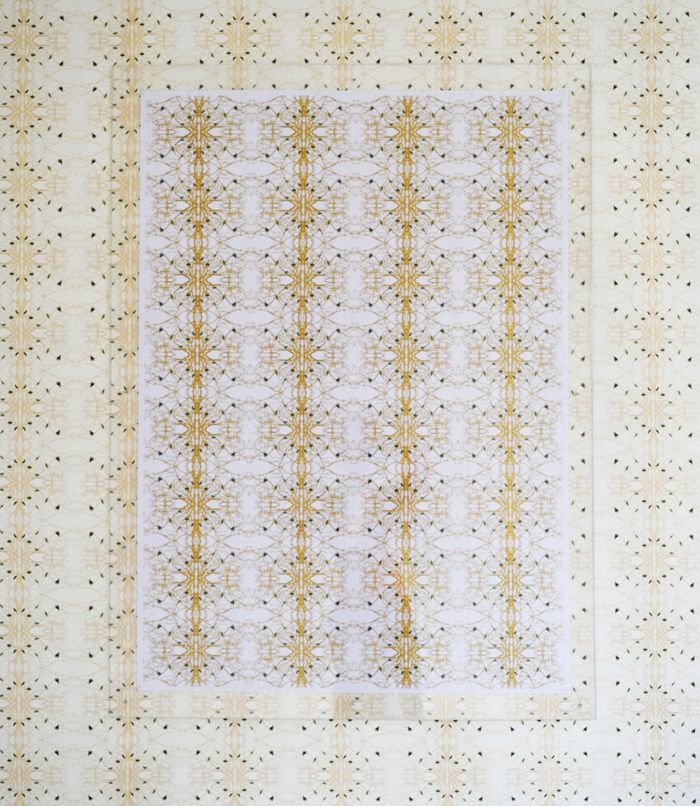
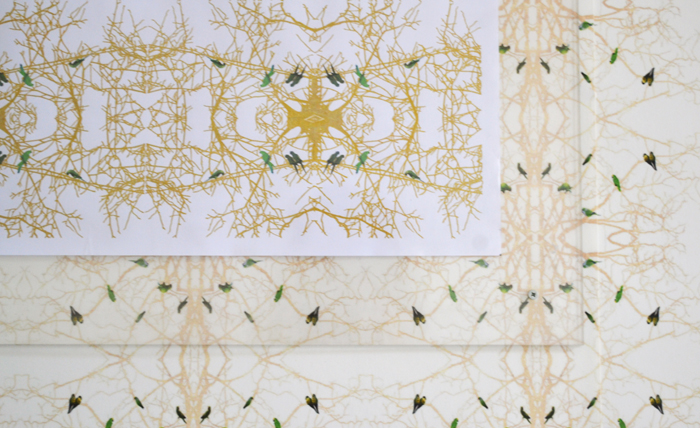
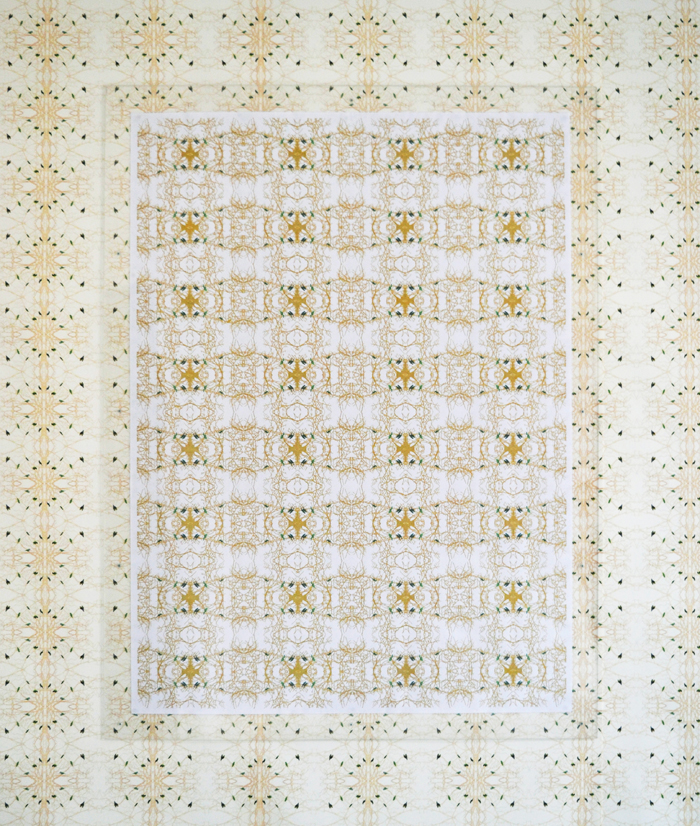
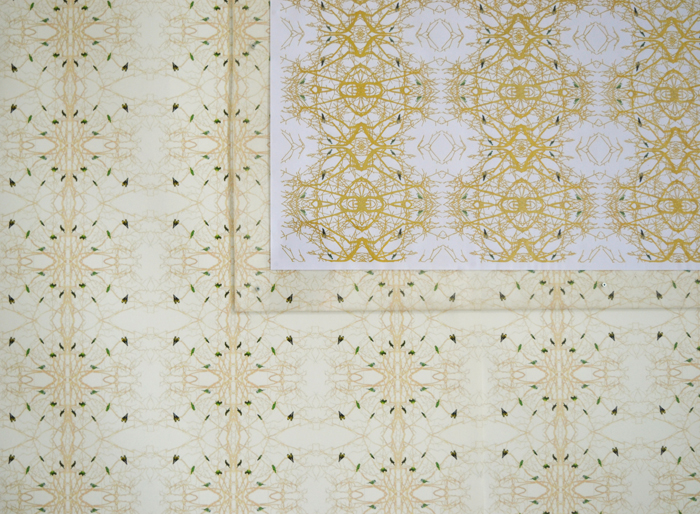
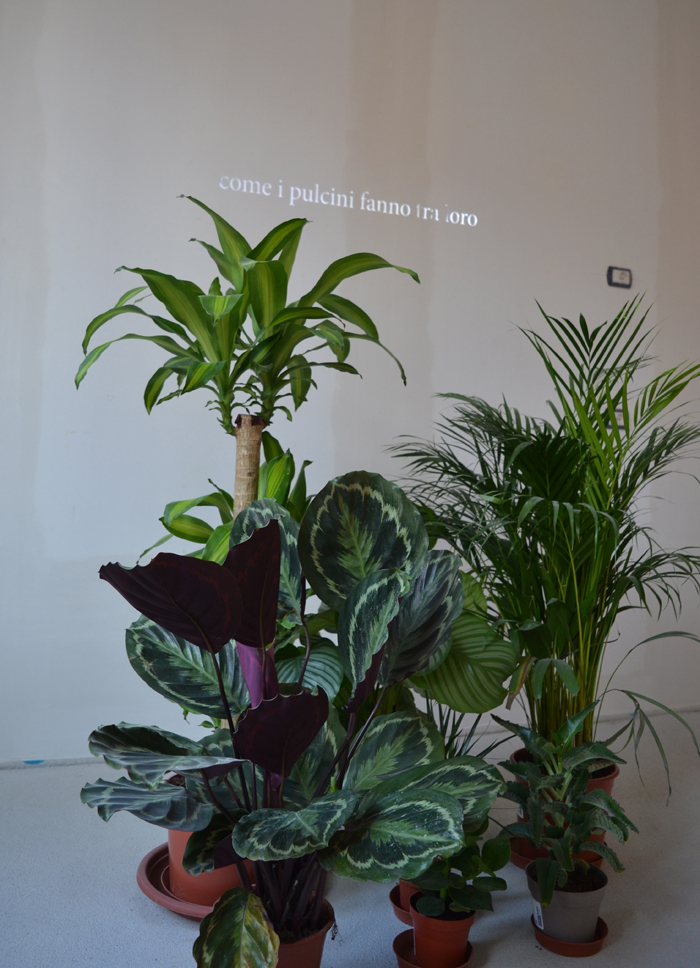
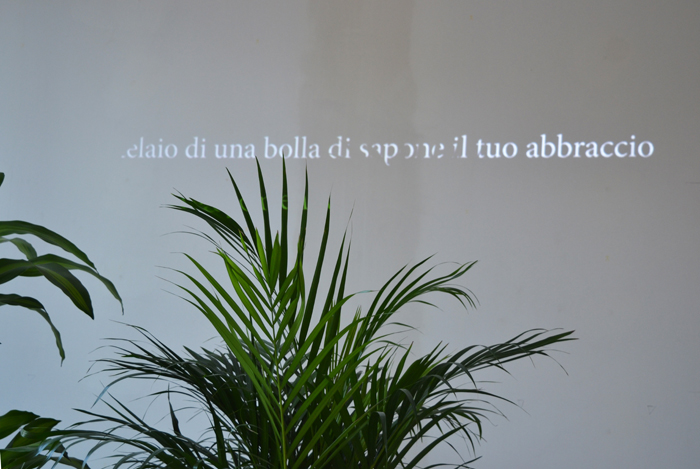
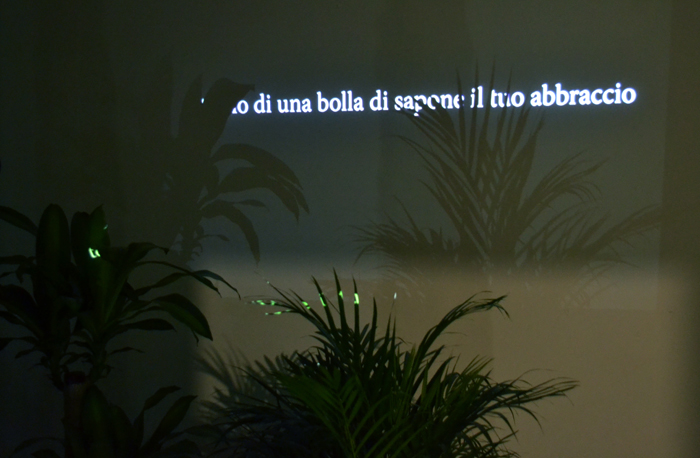
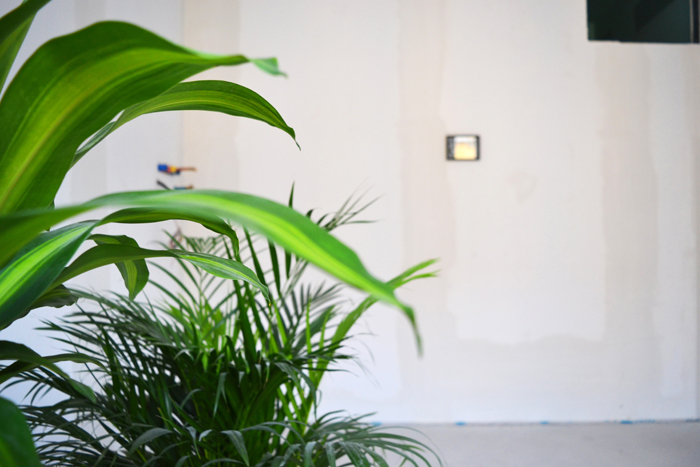
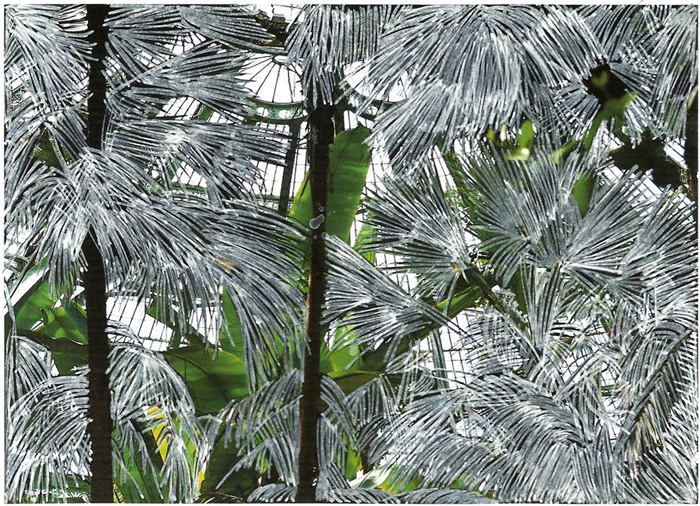
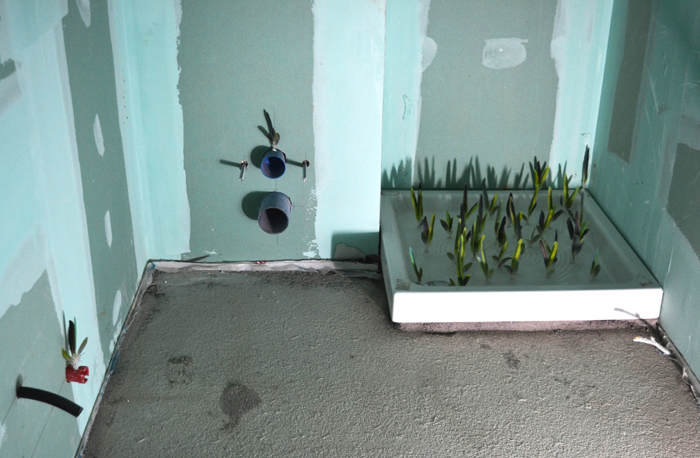
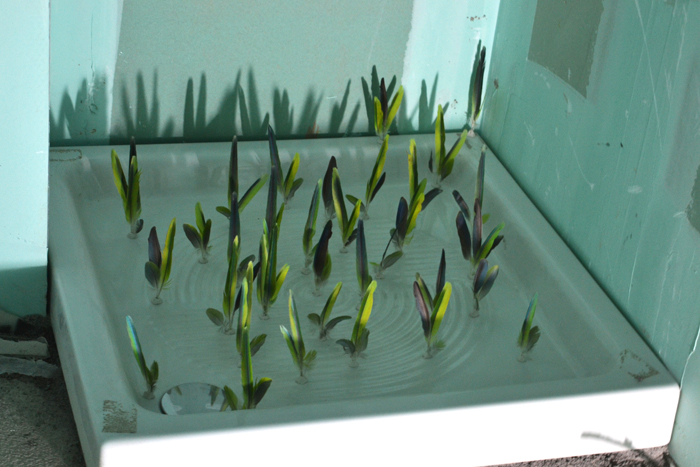
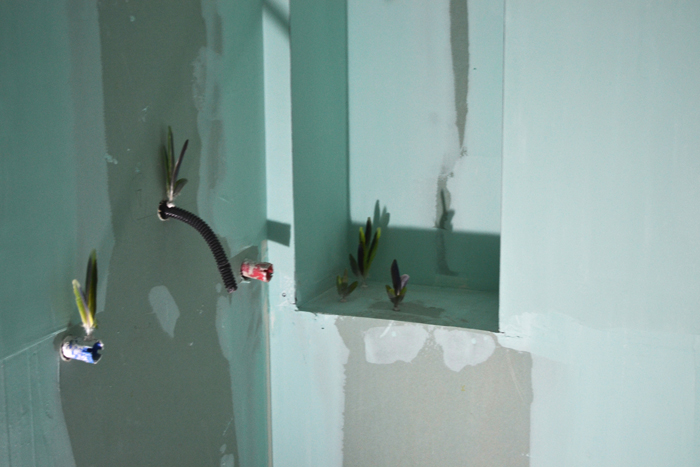
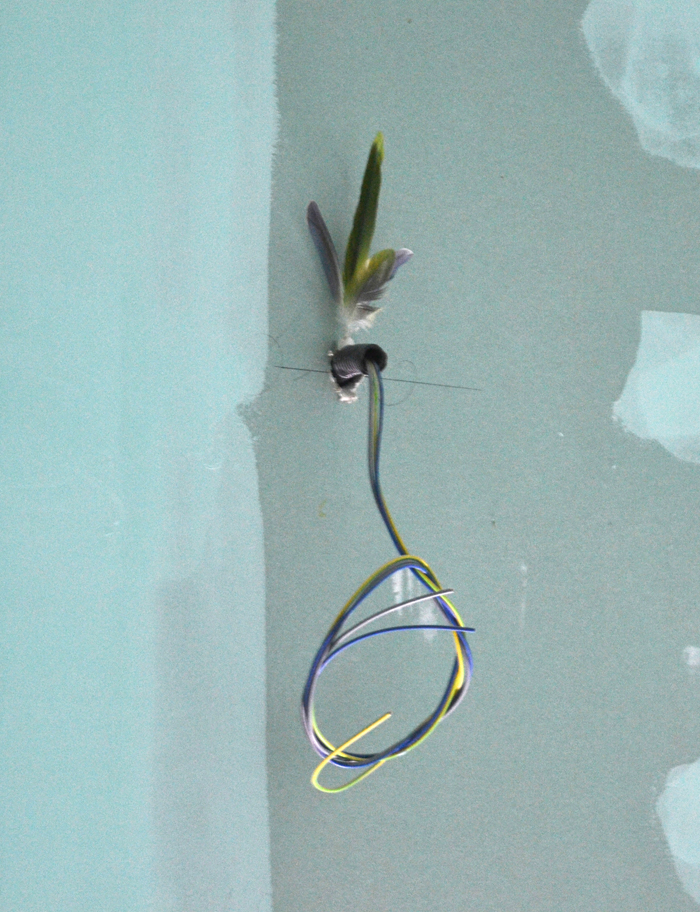
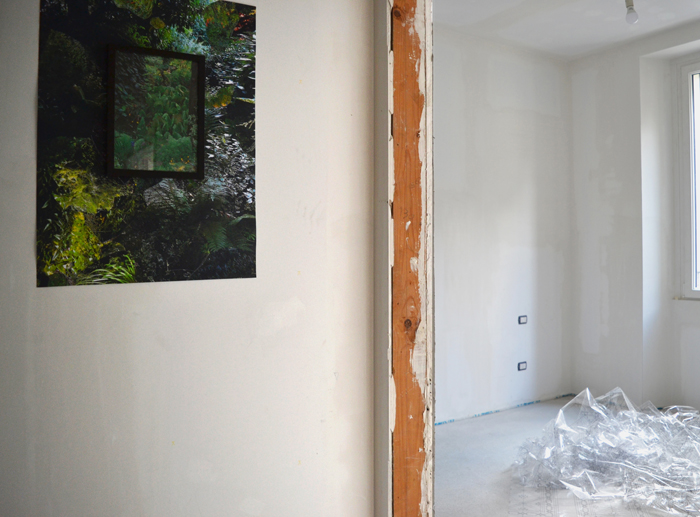
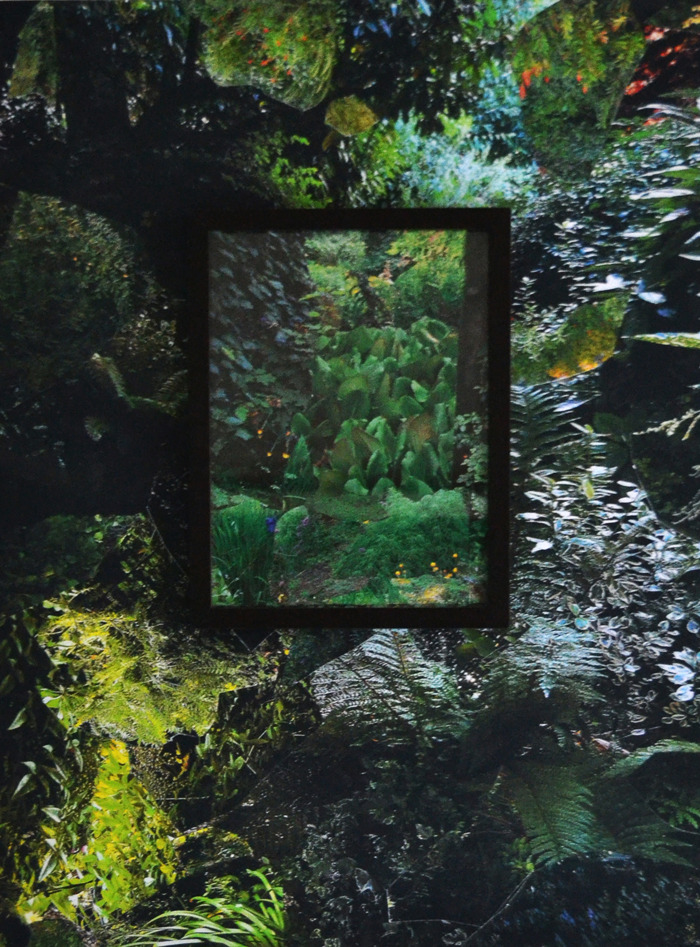
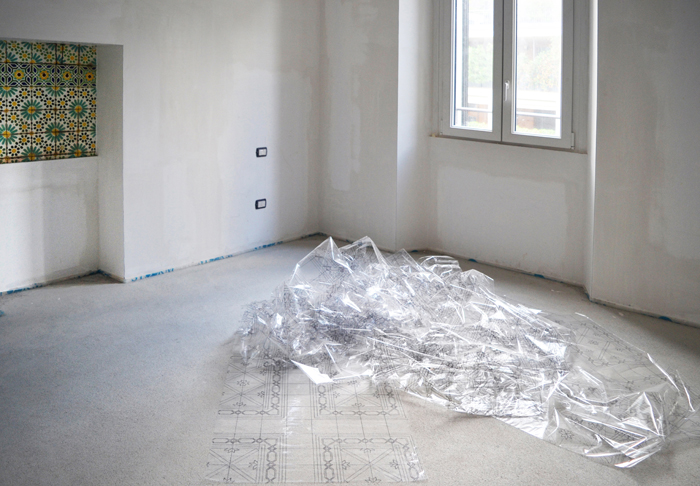
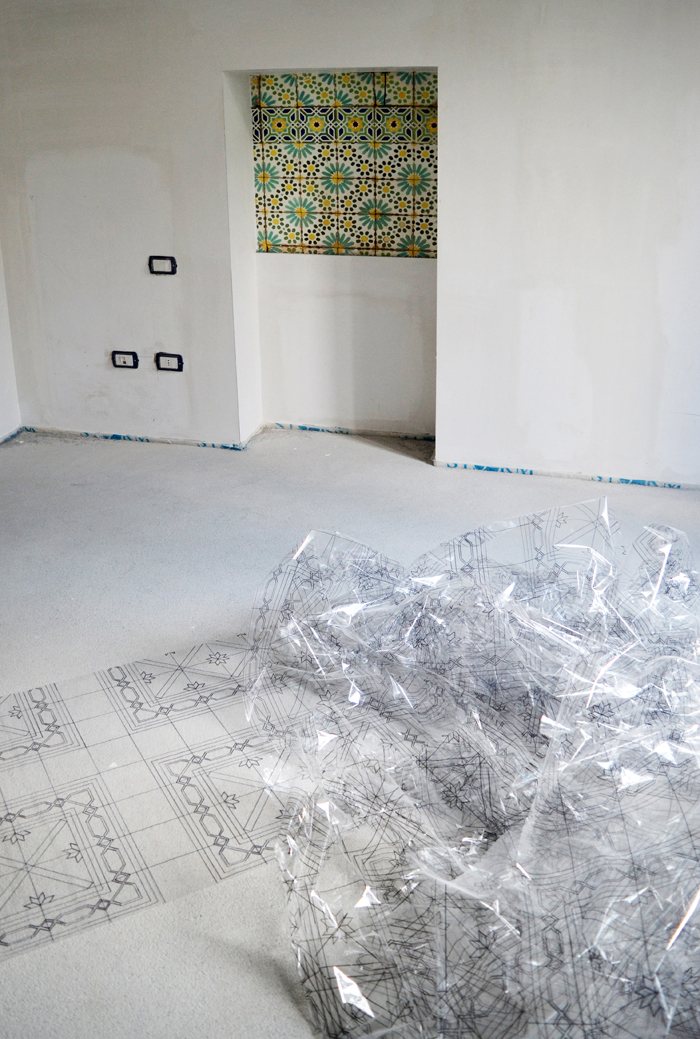
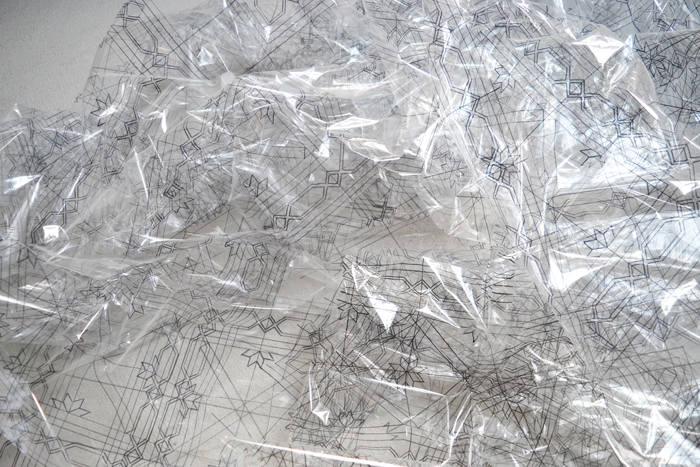
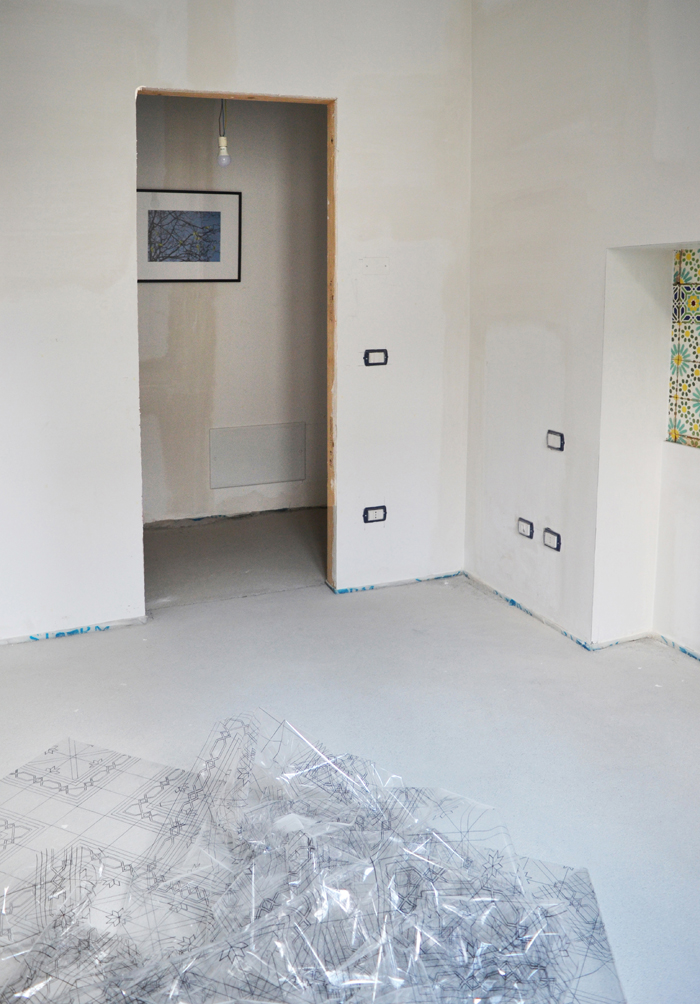
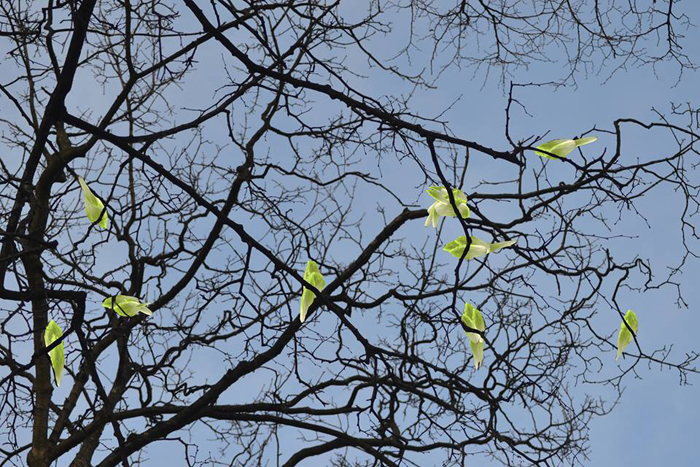
The second-floor apartment incarnates, in a play of geometric pattern and out of control components, the growth, evolution and allocation of elements of nature, defining a geometric status of landscape composition. Valentina Perazzini, through interventions on the wall and on the floor, trough some homages to the pre-existing clay decorations and even through contributions inspired by the visible electric system, evokes her own search for cataloging and ordering the vital component. The intent is to arrive at the origin of multiple observations en plein air. Causes of photographic incursions and mathematical models of plant components.
Through the repetition of patterns and structural motifs, the walls reflect the need for a perspective cage able to guide a non-linear gait for the visitor. A spectator wrapped and dragged inside the backdrops that recall the plumbing of the ancient botanical greenhouses, of gardens which have disappeared. Chisels between collages impossible to distinguish from the sum of their parts, as well as parrot feathers inserted in the interstices of the pipes, or projections filtered by decorative plants, give back to the rooms the tensions of forces of nature tamed by marks. No human presence seems to have survived the passage of environmental reticulates which, in repelling the gaze, shape it and hypnotize it; capturing the inability to register the contingency of a non-compliant ecosystem. A non-mimetic habitat that probably, in a distant future or in an earlier past, has forever alienated man.
The artist recalls an etymological origin of the word habitare, surrounding herself with an environment within which a species, animal or vegetable, lives, determined by all the factors that characterize it. The habitat of the apartment attests the overlapping of the natural and urban space, intertwining, cooperating, adding or eliminating their effects to the changing of time. Living itself conditions, animates, lives these two phenomena: also ascribable to a biological phenomenon, it owes its existence to the link with nature and undergoes its modalities; yet, as an agent of this triple relationship and trait d’union of the two universes, Valentina Perazzini’s interventions place themselves in a position of autonomy and superiority over other animals, claiming for themselves the name of man. Entity that allows an indirect link with the natural forces, to overcome the fear of their unpredictability. Having demonstrated its superiority over internalized biology, the artist in FuturDome launches a new challenge to itself: the new goal of action becomes the ability to reflect on the signs of the place, giving life to a system that transcends territoriality.
Ginevra Bria